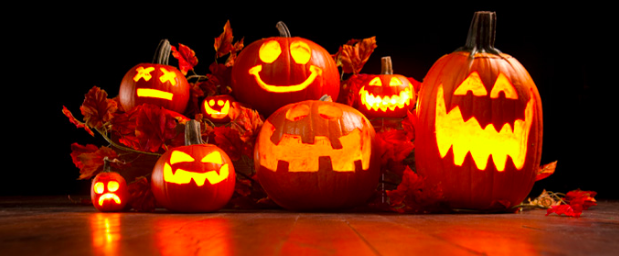Trick-or-Treat, Too Old for Sweets?
Traditional Jack-o-Lanterns that appear every Halloween as part of the festivities that younger children and teenagers alike enjoy. Photo courtesy of AAA Exchange.
October 31, 2018
Grinning Jack-o-lanterns and black spiders are beginning to adorn the doorsteps and houses of many. The weather is growing colder each day, and the air feels crisp outside. Halloween, the night where children gallivant around the darkened streets seeking candy, is rolling around again this year. For many years, it’s likely that many Jefferson students have participated in this yearly event at least once in their life. Decked out in costumes ranging from absurd to adorable, we all may have rushed to someone’s door and asked for treats as children. But now, as teenagers, should we still be going trick-or-treating?
Many people who give out candy have complained that teenagers are almost always behaving rudely towards them, with their aggressive demands and yells for candy. Teenagers tend to forgo dressing up as much as younger children and to candy-givers, this shows a lack of effort or real care for Halloween other than the candy. As well as that, they appear in loud, rowdy groups that disturb the general environment around them. One of the bigger issues involve teenagers ringing doorbells after 9, sometimes even at 12 AM. For elders who are trying to sleep or parents with smaller children who are going to school the next day, this is the exact opposite of what they need. At a first glance, these points seem rather compelling–teenagers aren’t the same as younger children and hence these types of habits are detrimental to the neighborhoods around them.
In some places, people over the age of 12 aren’t even allowed to go trick-or-treating, or they may face fines up to $100. One such is example is a city near St. Louis, where teenagers aren’t allowed to go outside after 8 PM on Halloween. The mayor states that the point is to keep the public safe.
However, the other side of the debate seems to be much more lenient with teenagers. Many parents say that in a time where children are “growing up” more quickly than ever, it’s important to allow them to at least have some days where they can be a child again–specifically, Halloween. They also say that they’d rather their children be out trick-or-treating rather than getting drunk and getting into dangerous activities, though it’s a weak claim as there are many other things teenagers can do besides getting drunk. Most claim that as long as their teenagers follow set conditions, they can still go trick-or-treating. The conditions most parents list tend to include:
- Put the younger children first before yourself
- Do not ring doorbells past 9 PM
- Wear a costume that’s not too scary
- Be polite through actions such as always saying “Happy Halloween!” and “Thank you!”
While both sides are incredibly divided, I believe that teenagers should be allowed to go trick-or-treating; there’s no harm in doing it, as long as the teenagers are well behaved. Most of the problems the opposing side has with teenagers going trick-or-treating comes from behavioral problems when doing so. If those problems were eliminated, they ought to have no complaints. Going as far as making it illegal for teenagers to go trick-or-treating is over the top, and instead of providing a sense of security, it seems rather stifling. Dressing up in a costume is fun, eating candy is fun, and dashing around from colorfully decorated house to house is fun as well. With exams and the pressure of college looming ahead, what’s wrong with letting teenagers enjoy Halloween — the one night of the year where they can be anything?
For more on this topic, click here.






